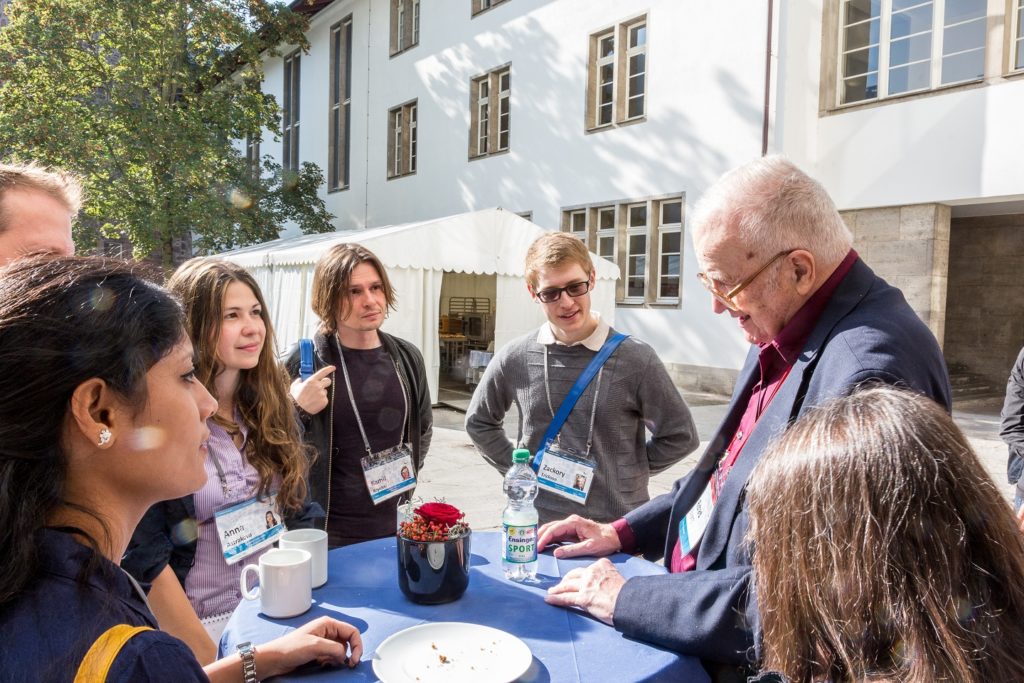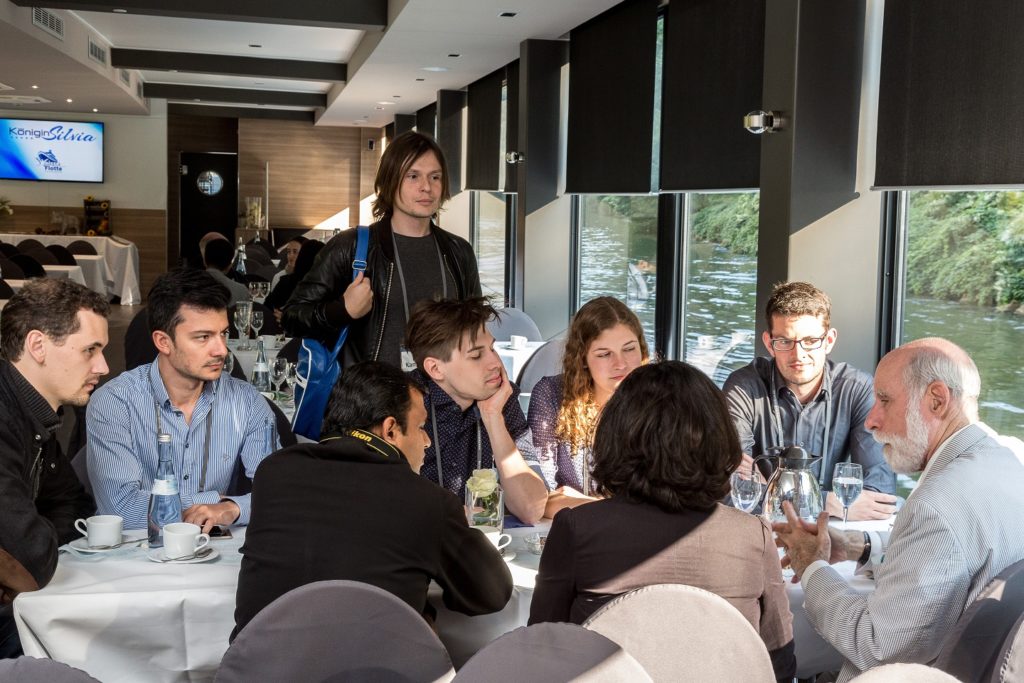How the HLF helped to pave a path to CERN


Pivotal moments in life can be elusive, but when they occur, there is no denying that they will influence the future. They almost never occur in a vacuum, as most often they are links in a chain of events that precipitate them.
Kamil Krynicki, a researcher in evolutionary algorithms, shared some insights about how his experience at the 4th Heidelberg Laureate Forum (HLF) opened doors for him at the European Organization for Nuclear Research, or perhaps more recognizable by its acronym, CERN. As in most cases, the steps toward any destination can be convoluted and seemingly unrelated until the point of arrival.
Kamil dreamt of working at CERN since he was 12, when the Large Hadron Collider was first taking shape. Self-admittedly, he realizes that is an odd moonshot for a 12-year-old to strive for, regardless he knew he wanted to be a physicist at CERN. Though both his life and research went in different directions, the vision experienced a rebirth.
“Then it came back, in a very weird way. I can still do it, just not as a physicist. Sort of renaissance of this dream of mine in recent years,” reflected Kamil.
Part of that journey began during an Erasmus year that took him to Valencia in 2008, and Spain carved a special place in his future, largely in part to one particular influence. In that year abroad, Kamil met Professor Javier Jaén Martínez, who would have an immediate and lasting impression on his life’s trajectory. “He laid the foundation of everything I am right now,” said Kamil. “Without him there would be no HLF nor CERN, nothing.”
He returned to Poland to finish his master’s and during a brief stint working in the industry, it became painfully clear to him that this was not the direction he wanted his life to go.
“You’re in this environment during your master’s in which you solve tough, tough questions, the most elaborate algorithms and it’s very stimulating,” said Kamil, “Then you start working in industry and it really isn’t.”
“I just wanted to do something exciting, any algorithmic problem of high difficulty.”
At the time, evolutionary algorithms were experiencing a surge in popularity and a PhD position was available under none other than Professor Martínez. Kamil sprang at the chance not only to return to academia, but to Valencia as well. Towards the end of his PhD, he applied for a position at CERN, but received minimal feedback and decided it might not be where he was supposed to be after all. Then, before finishing his PhD in 2016, he read about the HLF in a newsletter from the Association for Computing Machinery (ACM) and immediately thought, “Wow! That is something that I should do.”
His expectations of what the HLF would be were not met, but surpassed. “Honestly, I was expecting to see a conference of some kind with the important people simply appearing, giving a talk and disappearing, and that would have been fine,” said Kamil, “But it was just absolutely brilliant.”
He advised future participants to be “very aware of what sort of event it is. You’re going to be interacting a lot with people you usually only read about. So be prepared in a way to have a meaningful conversation with anyone you admire.”
The HLF broke down the invisible barriers that separate the laureates from the rest of the scientific community. In Kamil’s words, “There’s this magic world between those guys and us, and all of a sudden, it’s not there anymore.” Perhaps more important to his personal development, the experience at the Forum also motivated him to try his chances again at CERN.

For his application this time around, Kamil enlisted the help of an HLF laureate, Chief Internet Evangelist at Google and AMC A.M. Turing Award recipient, Vinton Cerf. “This sort of person shouldn’t even answer an email to just a guy. Not only did he, he also wrote a recommendation letter. He’s just an outstanding human being. And all of a sudden the phone started ringing.”
After several months, the tides changed and the interview process began. This April, Kamil will become a research fellow at CERN.
His gratitude to Vint Cerf has not extinguished and as a childhood dream comes to fruition, Kamil is confident and eager to showcase his skillset. “I’m not there by accident, I feel like I’m going to do ok.”

